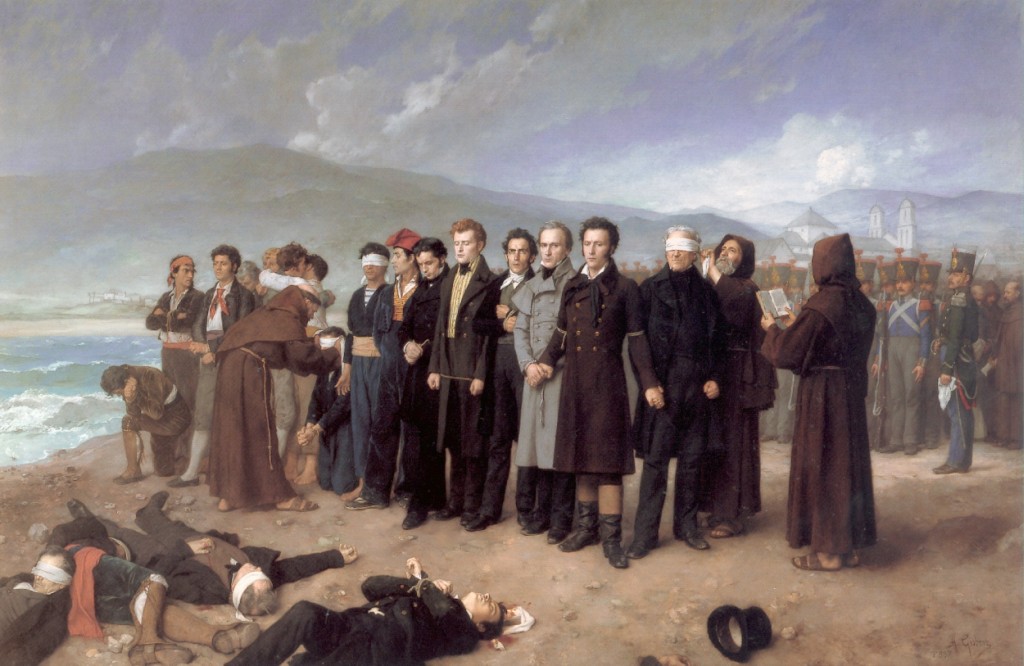
an edition of his manuscript journal, edited by Eric Nye, Department of English, University of Wyoming

Antonio Gisbert (1835-1902), El fusilamiento de Torrijos y sus compa�eros en la playa de M�laga (1888), Prado, Madrid.
Imagined scene on the morning of 11 December 1831.
In the process of editing the letters of John Sterling, I discovered two connected fragments from a hitherto unknown diary kept by Sterling's contemporary and fellow Cambridge Apostle, John Kemble, in Gibraltar. Kemble is best known as an Anglo-Saxon scholar, perhaps the nineteenth century's greatest, and as a member of the eminent theatrical family. The two fragments of his diary were separated sometime around the turn of the last century and are now on different continents. Together they flesh out considerably the best existing accounts of the attempt to foment a revolution in Spain by a group of rebels supported by the idealistic Cambridge Apostles. Kemble may have intended his diary as more than a private record of his dealings with the rebels. He took the precaution of entering long personal or politically sensitive passages in code. I have cracked twelve of his codes by aid of computer. Some of his coded entries treat military matters, but as the months dragged on and military success seemed more elusive, Kemble's attention turned to personal affairs, his friendship with Richard Chenevix Trench, his study of Spanish literature, and especially Spanish women. The diary is a fascinating record of the role of political ideas in the lives of the young men who became the Victorian intelligentsia. Tennyson and Hallam (who made in this connection their famous journey to the Pyrenees with money for the rebels), Sterling, and a number of Spanish dignitaries receive Kemble's attention here.
For details contact Eric W. Nye.